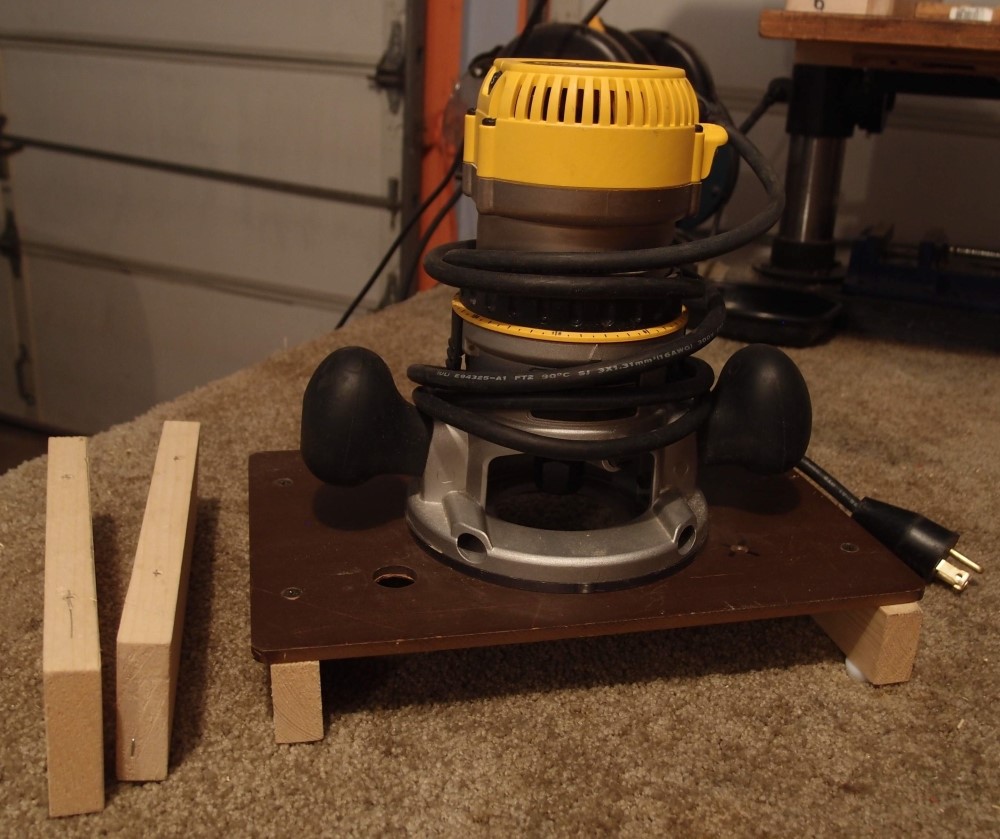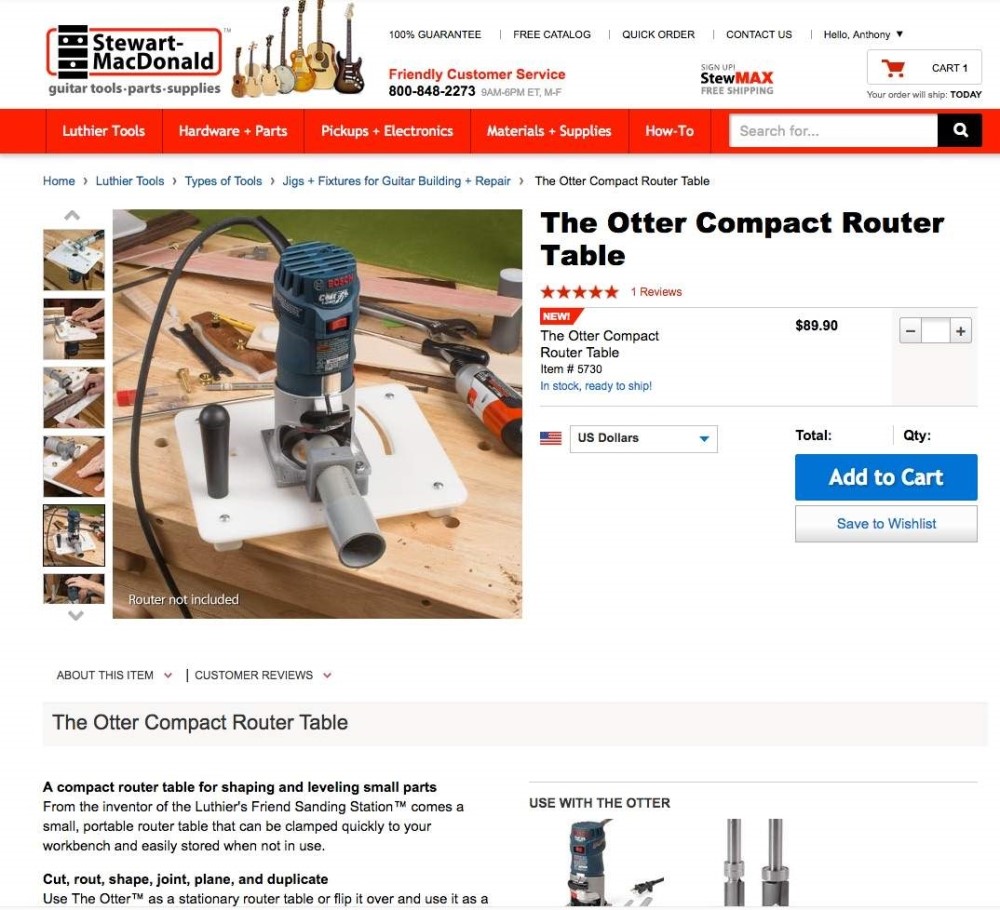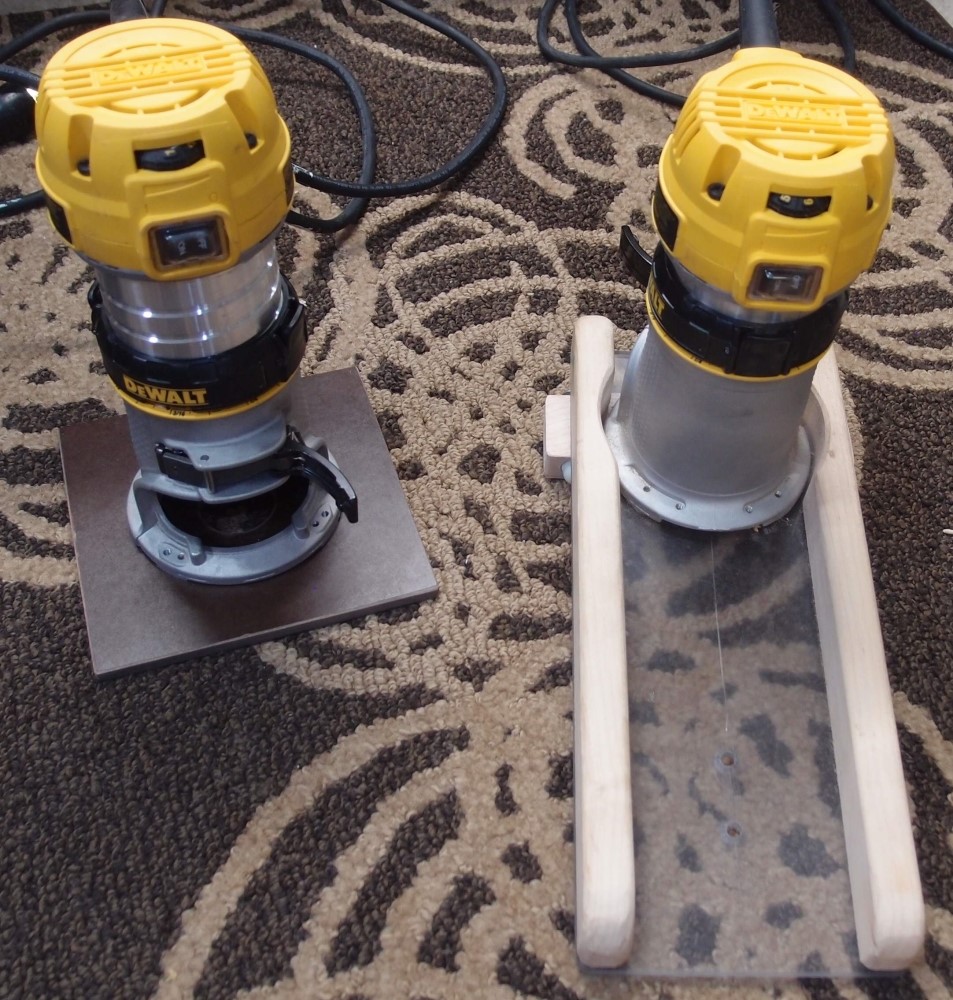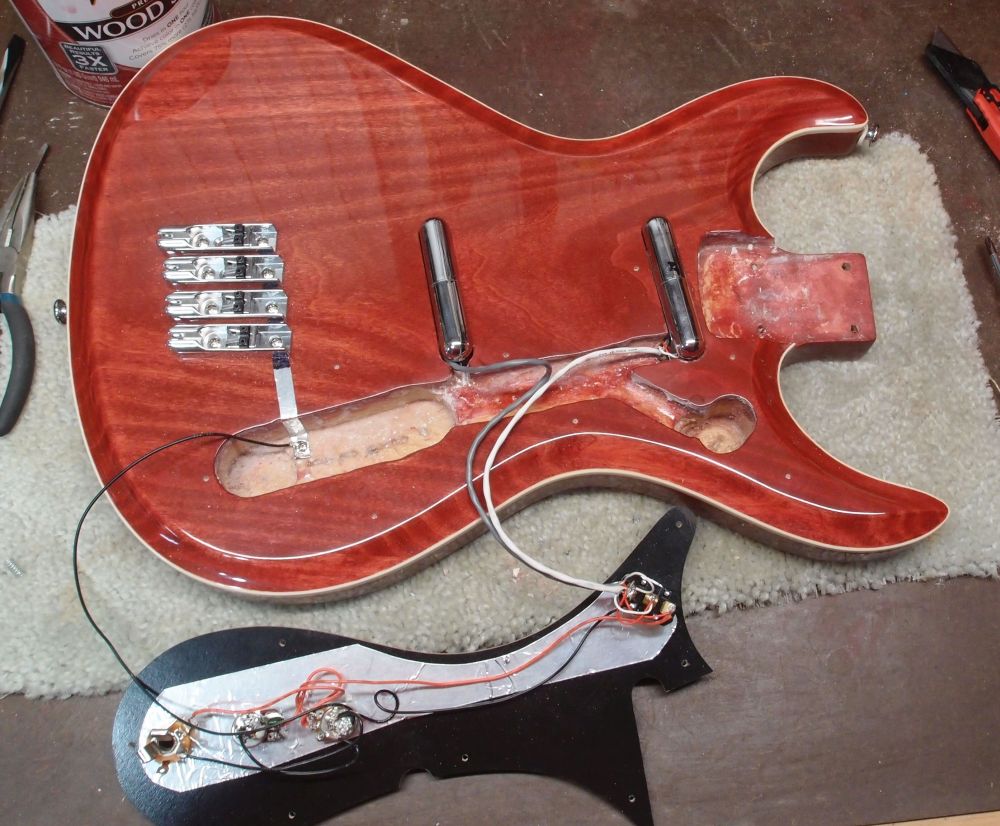Reverse Routing Plate

The Reverse Routing Jig holds a router above the workpiece, which is secured to a flat smooth surface below. I use an old piece of countertop, not a carpet, as in the picture. By sliding the router over the workpiece, you can mill the face of the piece. Height is adjustable by changing the legs. This jig is very useful for milling Fender-style headstocks. It is also possible to cut angled headstocks by blocking-up the workpiece and using the longer legs. This jig is basically an upside-down router table, with one great advantage - you can see what you are doing.

This is such a versatile jig that StewMac actually copied it. I had my original version posted online well over a year before they came out with theirs. Imitation is the sincerest form of flattery.


Questions or Inquiries?
Just want to say Hello? Sign the .